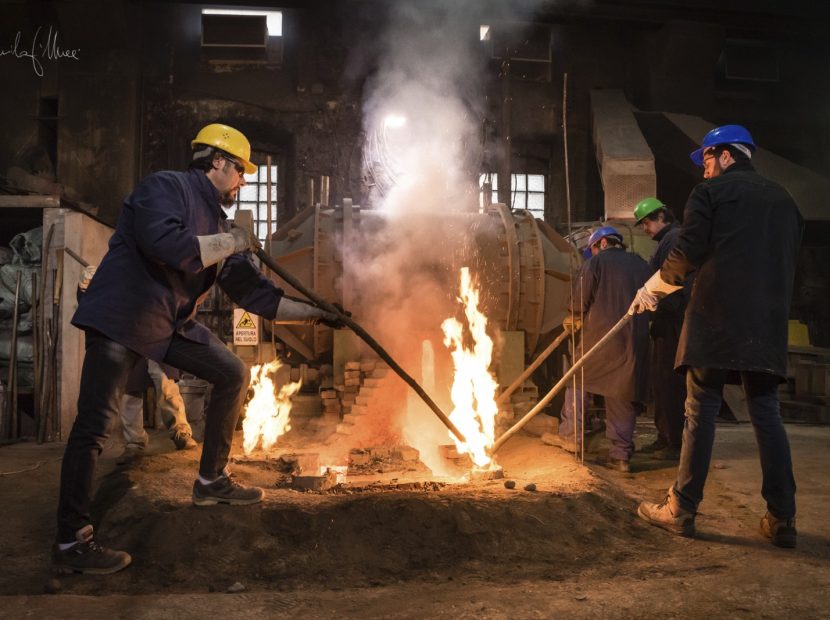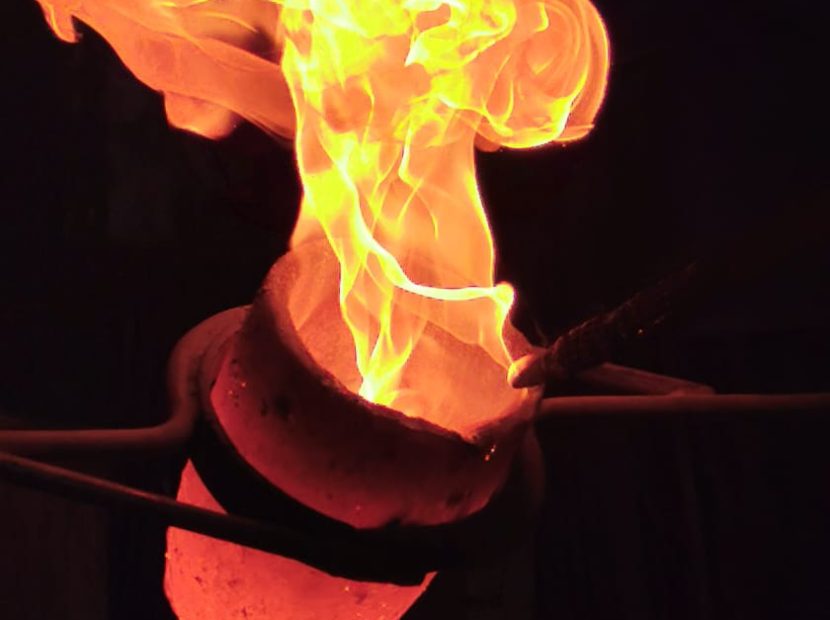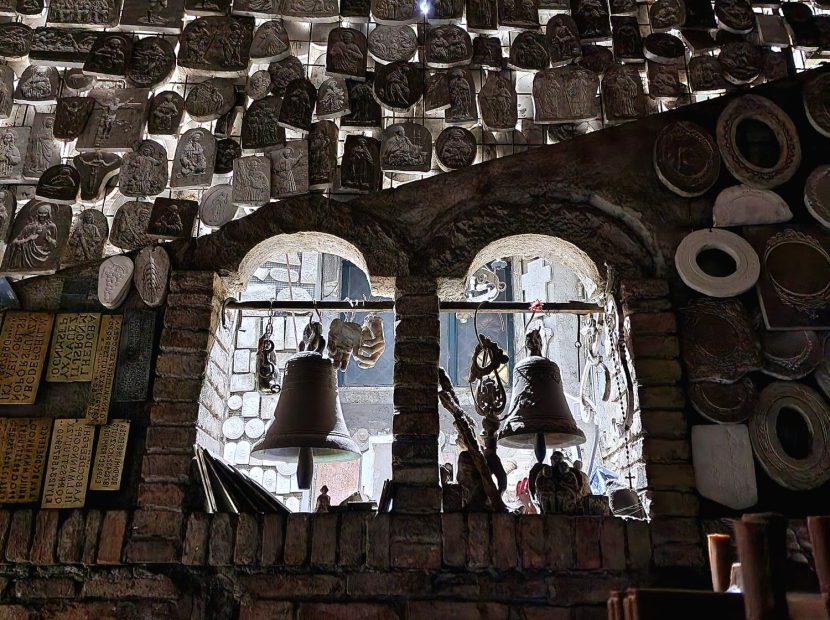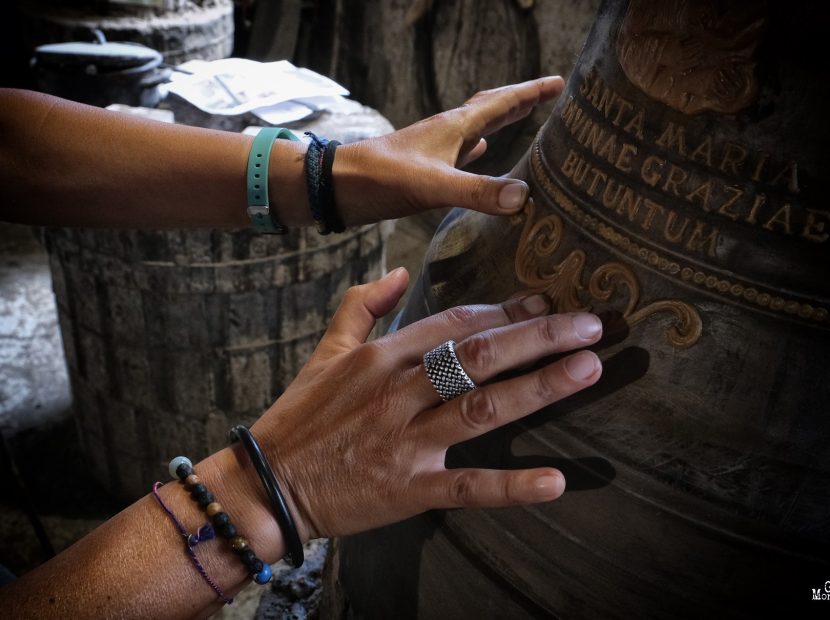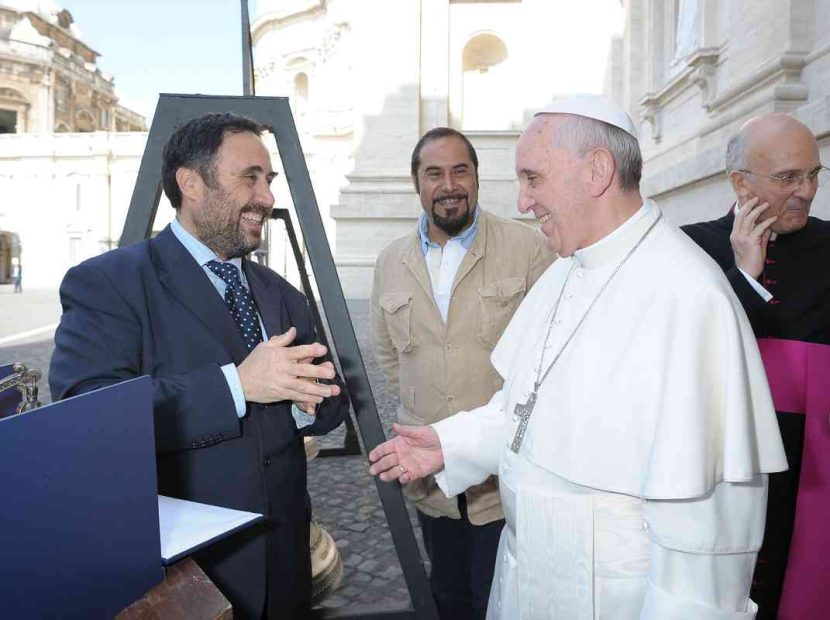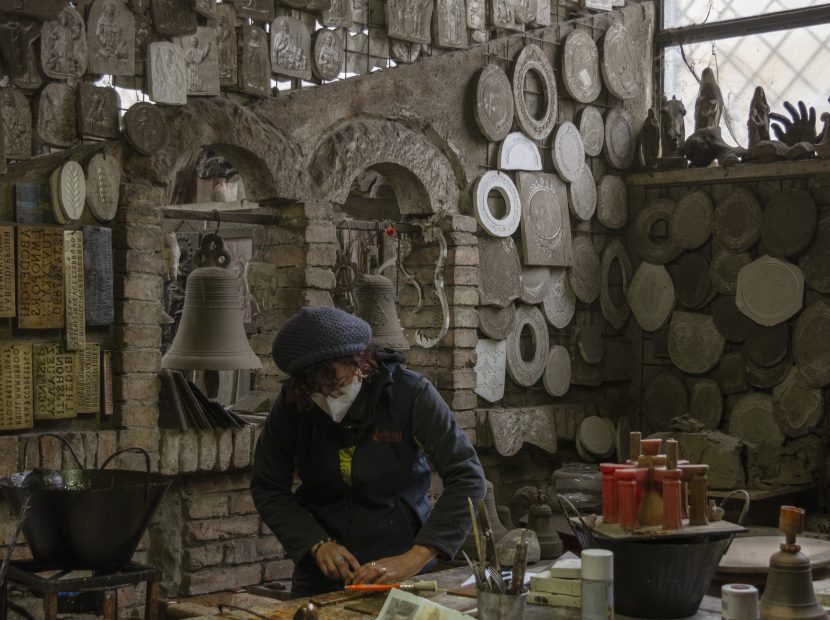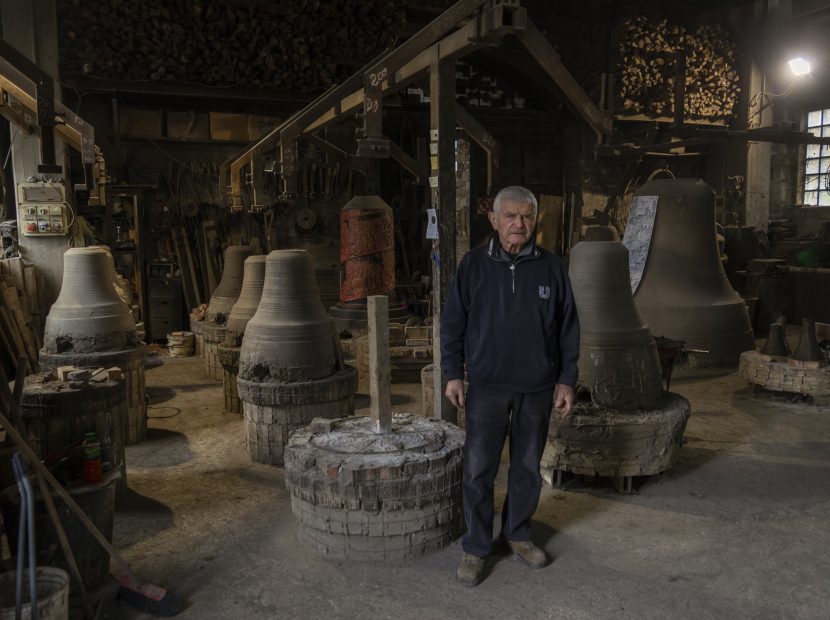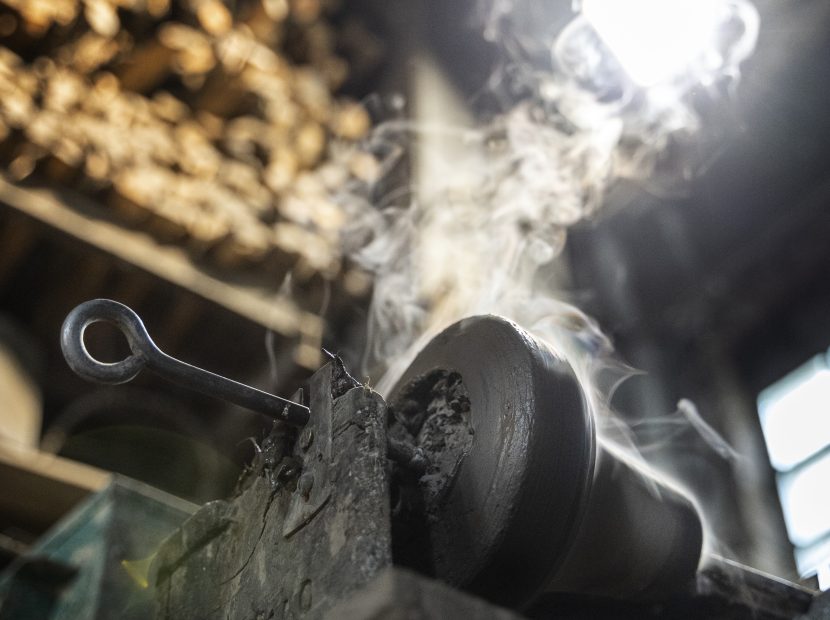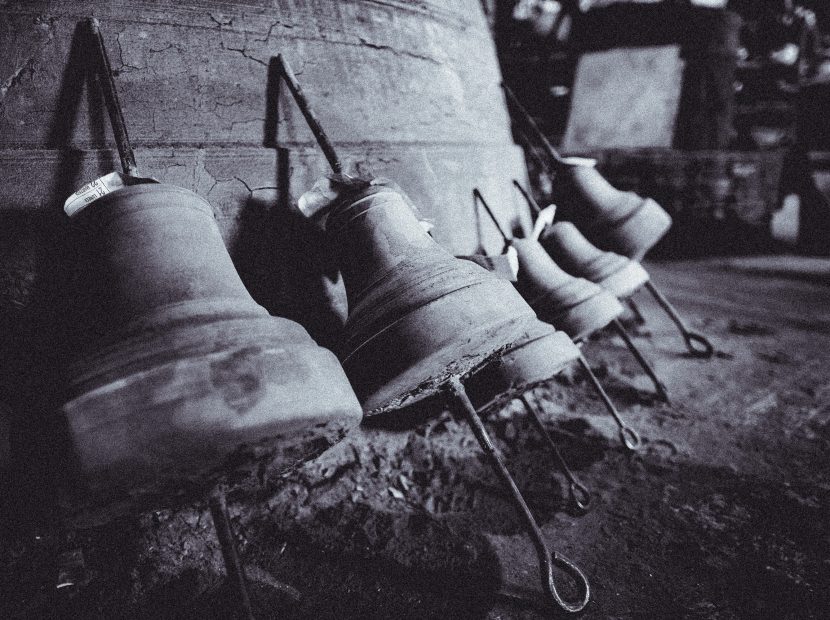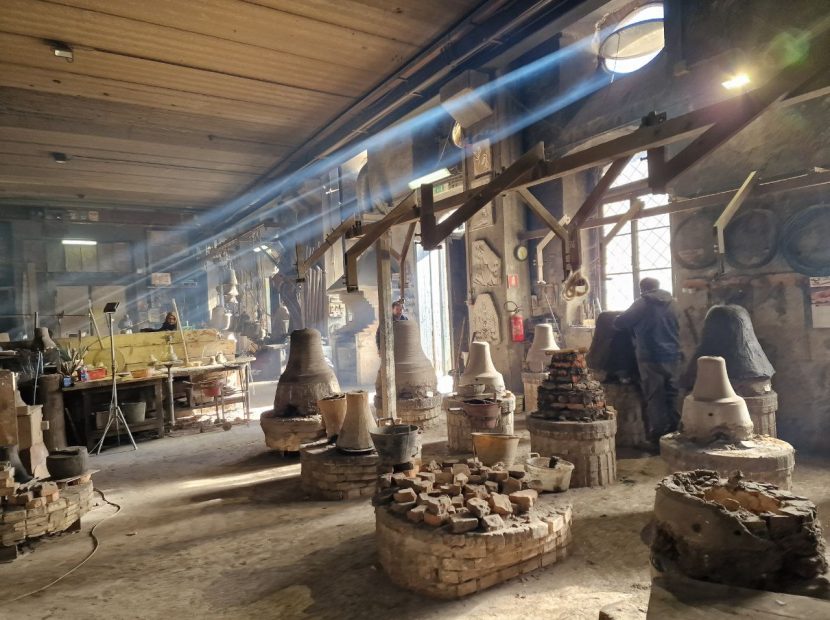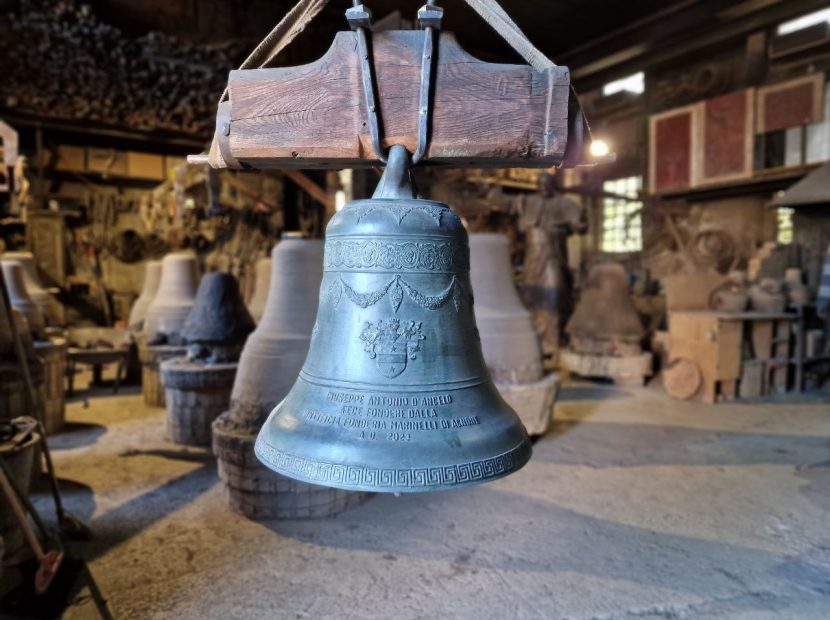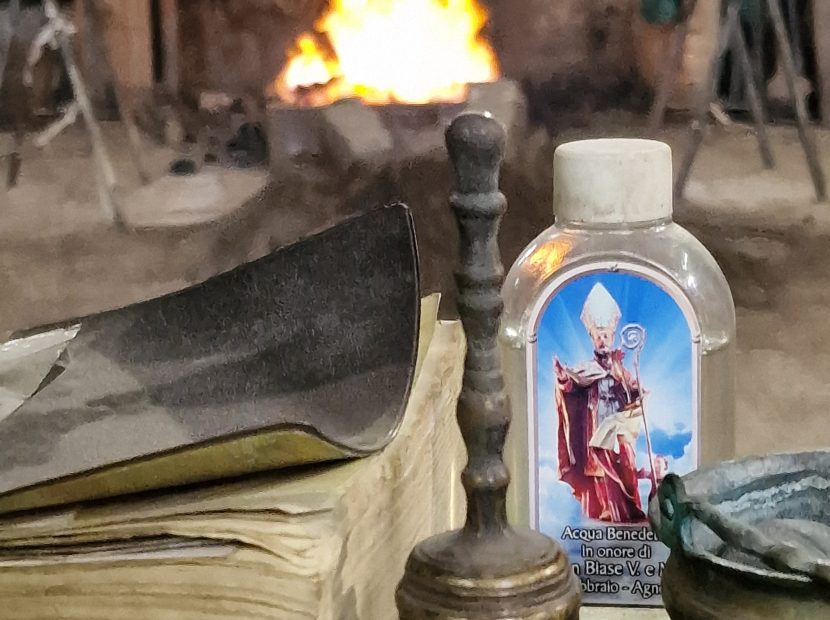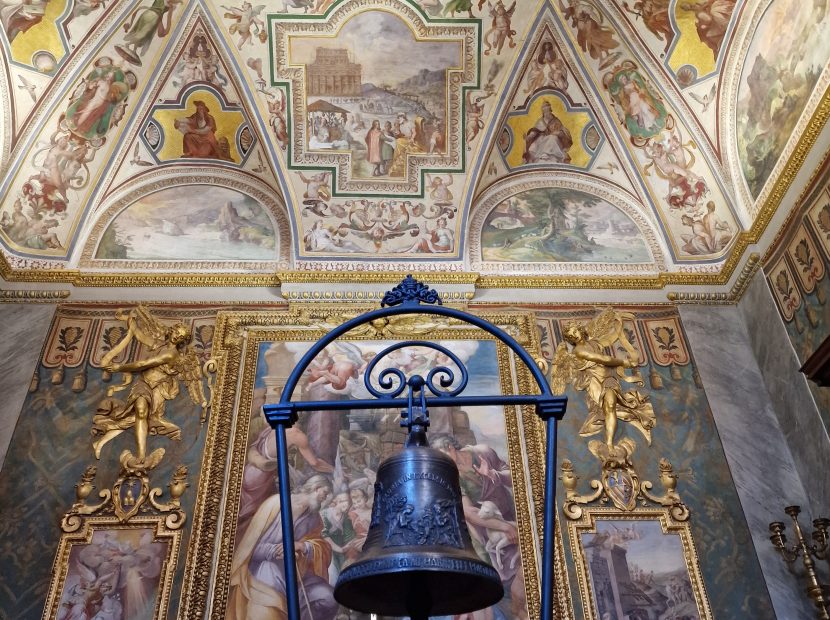Our History
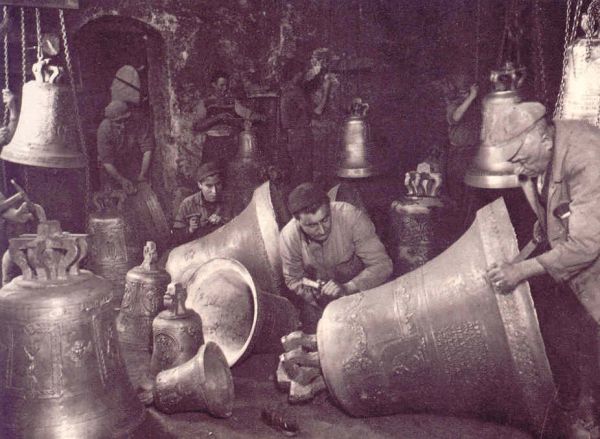
Over the nearly 1000 years of its long history, the Marinelli Bell Foundry has seen its difficult moments highlighted by many great satisfactions. The most significant honor for the Marinelli family took place in 1924, the year in which Pope Pio XI granted the family the privilege of portraying the Papal Coat of Arms in their works. The greatest moment of gratification was on March 19, 1995 when Pope John Paul II came to visit the foundry.
The Marinelli bell foundry is located in Agnone, a town in Molise, in the province of Isernia, which today has a population of nearly 5000. Originally a settlement of the Samnite population, then an important medieval city where several convents were established, Agnone is known all over the world as the home of the oldest bell foundry, which is also the oldest family-run Artisan Company in the world.
For centuries, we have been creating tailor-made products and we always tell the story in these words:
“The Marinelli bell foundry has been around for over ten centuries and has only continued to gain trust and appreciation by demonstrating high levels of honesty, expertise and earnestness.
All of the bells crafted in our foundry have a well-defined special characteristic that comes from the vast experience that has been passed down from generation to generation over the centuries. Made to last for centuries, they have a slender, elegant shape and a clear, sweet, sharp sound. These results are achieved through precise and diligent casting methods and the use of quality bronze material containing exclusively pure copper and tin. Our bells are also meticulously decorated with elegant friezes, artistic bas-reliefs and clearly carved custom inscriptions and images. Our goal is to do everything possible to completely satisfy each esteemed client that honors us with their order.”
1924 – Honorary Commander Pasquale Marinelli
2024 – Honorary Commander Armando Marinelli, Honorary Knight Pasquale Marinelli
Tales of Bells
Although we cannot know who made the first bell ever, we know that bells have been found among the most ancient archaeological artefacts in China, which leads us to believe that they were likely first invented by populations in eastern Asia. We also know that over 2 millennia ago Indian philosophers gathered to eat and pray to the sound of bells. Even in the ancient West, the use of bells for many purposes was widespread amongst the Etruscans. King Porsena’s tomb is described as being adorned by rows of bells which perpetually tinkled in the wind in his memory. Bells also had more mundane uses, such as in Greece and then in Rome, where they were used to announce the opening of the market stands. When larger bell forms came to be, bronze from the Campania area was believed to make the best bells. In fact, the word “bell” in Italian, “campana”, derives from “vasa campana”, meaning “vase from Campania”, as their shape is that of an upside-down vase or cup.
Legend has it that Saint Paulinus, Bishop of Nola (354-431 AD) invented the “campana”, likely for use during Christian celebrations. Over time, the bell has been identified as a symbol of unification and has increasingly become a religious and social emblem. The power of bells was escalated by the fact that the Catholic Church had considered them “res sacrae”, blessing them and imprinting inscriptions on them that spoke of communion between heaven and earth. This attribution of extraordinary powers led some historical figures such as Saladin, Muhammad and Calvin to forbid the use of bells. In fact, from the tall Muslim minarets, calls to prayer are rigorously projected by muezzins rather than by bells.
The first bell crafters were probably monks. Although initially they were made of wrought iron, even for the churches, later, by casting in bronze, a copper and tin alloy, they were made to be more melodious and harmonious. Eventually, bell casters became such expert and refined craftsmen that sculptors during the Renaissance trusted only them to achieve the results they wanted for their pieces in bronze. Improving sound quality characteristics became a quest later on, though already by the 17th century, “bell scales” created in Europe were able to link musical feedback to the proportions of each bell. Today, there is still a place in the heart of Italy from which the voice of the Angels emanates: that is Agnone the bell town, where the art of casting sacred bronzes has persisted for a thousand years.
1000 Years of Bells
Marinelli Pontifical Bell Foundry is the oldest foundry specializing in the art of making bells. It also holds the record as the oldest family-run Artisan Company in the world, with the 27th generation of founders from the Marinelli dynasty working there today. Historically there were several families of bell craftsmen in Agnone but the Marinelli foundry is the only one that has survived, having passed this ancient craft down from father to son consistently over the last eight centuries. On display in the Museum of the History of Bells, there is a rare gothic bell that is said to have been crafted in Agnone 1000 years ago.
It is likely that bronze bells of noteworthy sizes were already being crafted in Agnone prior 1200. One thing for certain is that, in 1339, Nicodemo Marinelli, known as “Campanarus”, casted and signed a bell weighing about 200 kg for a Church in the Frosinone territory.
Bells as old as the 14th century, very skillfully crafted in Agnone, are on display not only in the Marinelli Museum of the History of Bells, but also in bell towers everywhere, from which they still ring clearly today.
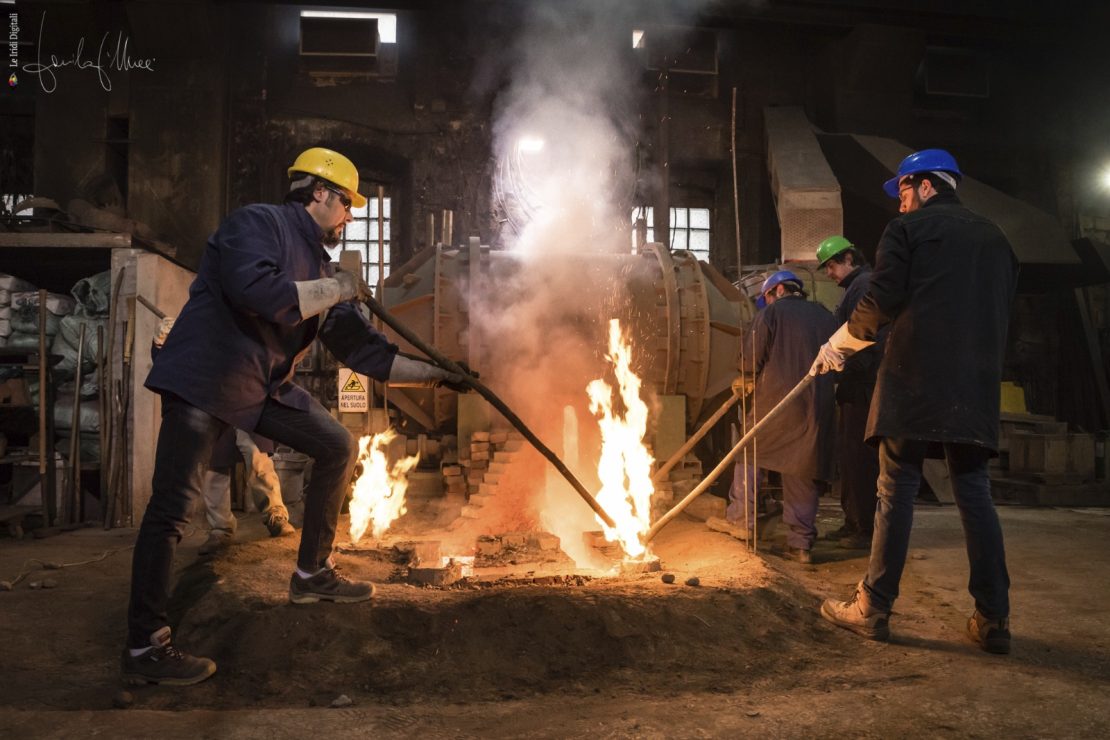
Origins of the Marinelli Bell Foundry
Over the 1000 plus years of its existence, the Marinelli bell foundry has seen its difficult moments highlighted by many extremely gratifying moments.
By 1862 the Marinelli foundry already had a presence at the Universal Exhibition in London where they were awarded a Gold Medal and a diploma from King Vittorio Emanuele II for the acclaimed carillon of 10 bells which was played using keys. The most significant acknowledgment for the Marinelli family came in 1924 when Pope Pio XI granted them the privilege of portraying the Papal Coat of Arms in their works.
During World War II the foundry had to suspend production activity as their bells were confiscated and their metal was used for weaponry. The Palazzo Marinelli, the family residence which also housed the workshop, was evacuated and occupied by German troops who used it as their headquarters. With its large rooms and large terraces overlooking the valley, its position was considered strategic and it also hosted TIMO (Telephony of Middle-Eastern Italy), the only telecommunications station in the area.
Resuming production post-war was difficult but by 1949 the Marinelli foundry had already been assigned the prestigious job of casting the bells of the Abbey of Montecassino, which was under reconstruction after being destroyed by bombings. Unfortunately, a devastating fire in 1950 forced the family to abandon the old headquarters and build a new workshop on the outskirts of town. Despite all this, they continued casting bells for the most well-known and loved Christian churches and also for new churches being built. In 1954 Einaudi, the President of the Republic, awarded a Gold Medal to the Marinelli foundry, “to the oldest company, a highly coveted award for their activity and loyalty to their work in our nation”.
In 1999 the President of the Republic, Oscar Luigi Scalfaro, had a bronze casting done and dedicated to himself and inaugurated the Museum of the History of Bells named “John Paul II” in honor of the Holy Pope who personally visited the Agnone Foundry on March 19, 1995. The work of the Marinelli craftsmen continues unchanged, both in terms of production techniques in use since the Middle Ages, and in terms of the expertise, passion and professionalism to which they have been dedicated for 8 centuries.
Historical 20th century bells made by the marinelli foundry
THE PEAL OF BELLS AT THE BASILICA OF POMPEI
100 years after the installation of the great peal of bells at the Sanctuary of the Blessed Virgin of the Holy Rosary in Pompei, Marinelli craftsmen returned to the majestic bell tower which had brought much prestige to their industry for their extraordinary maintenance works. The memory of the protagonists is still kept alive in the 26th and 27th generations today. In order to design and cast the 8 grandiose bells, a semi-permanent smithy was set up and the Marinelli craftsmen moved from Agnone to the Pompei valley with their families for 6 whole years, bringing with them little more than the mystery of bronze casting and the secret preserved in the shape of a profile made of seasoned walnut wood. During that time, they bore children and crafted bells in the area. Pasquale Marinelli, born in 1921, took his first steps in the villa of Blessed Bartolo Longo. So, the bells of that Marian Basilica are inextricably linked to the lives of the historical family of craftsmen from Molise. Likely, the echo of magnificence and sonority from those bells are what led Pope Pius XI to grant the use of the Pontifical Title, “with merit”, to the Marinelli company, the 100th anniversary of which will be celebrated in 2024. In memory of this anniversary, POSTE ITALIANE WILL ISSUE A COMMEMORATIVE STAMP WITH POSTMARK, WHICH FOLLOWS THE ONE ISSUED 25 YEARS AGO THAT WAS DEDICATED TO THE MUSEUM OF THE HISTORY OF BELLS TO COMMEMORATE THE GREAT JUBILEE OF 2000. On this occasion, the bells at Pompei, among the most beautiful in the world, will be the great protagonists.
